Innovation for regional heating networks
A milestone has been reached in the BM-Retrofit research project: a CO-Lamda control system has been put into operation at the biomass heating plant for district heating in Saalfelden am Steinernen Meer in Salzburg. This increases the efficiency of heat production, reduces emissions and minimises the consumption of biomass.
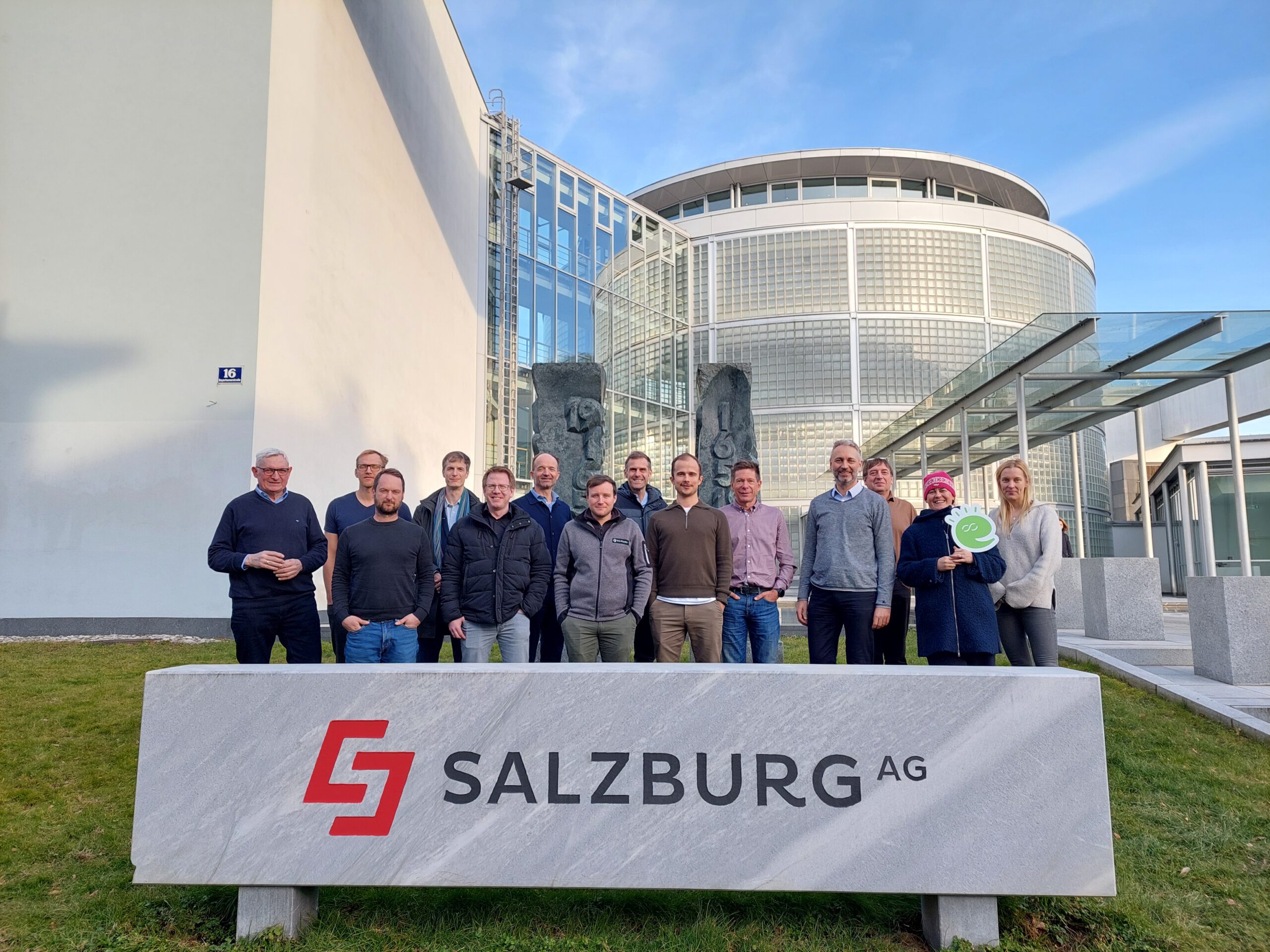
© Green Energy Lab / Karin Dögl
31 January 2025 – The partners of the Green Energy Lab project BM Retrofit came together in Salzburg at the end of January to discuss the initial project results for the modernisation of biomass-based district heating networks. This is an important project in the context of the energy transition, as biomass offers great potential for a sustainable heat supply in Austria. And this is important, as the heat supply is responsible for around half of final energy consumption. The decarbonisation of the heating sector is therefore an important component on the way to an environmentally friendly energy supply, which is also referred to as a “heat transition”.
Retrofitting and modernisation of heating networks
The BM Retrofit project is being led by AEE INTEC. The overarching goal is to develop innovative solutions that drive forward the heat transition and enable a 100 percent renewable and local heat supply. One focus is on the retrofitting and modernisation of existing heating plants and heating networks. Not only technical, but also systemic and organisational measures, such as new business models and the integration of stakeholders, are being considered and innovative solutions developed. For example, greater overall system efficiency can be achieved through the sensible integration of flue gas condensation, heat pumps and storage technologies. In times of high commodity prices, this is a sensible investment in the future for regional heating network operators.
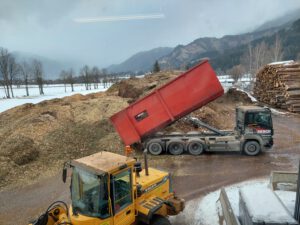
The Saalfelden district heating network is operated in an environmentally friendly
manner using regional biomass (© Green Energy Lab / Karin Dögl)
Requirements for heating networks of the future
How existing heating grids can be adapted to future requirements, including economic ones, are questions to which the research project aims to provide concrete answers:
- What optimisation potential can be exploited in biomass heating plants?
- Is there good potential for integration, e.g. waste heat, heat pump systems?
- What role do the control and operating strategy of biomass boilers play in this context?
- What opportunities are offered by higher-level control strategies using intelligent energy management systems that allow yield and load forecasts?
- What can sustainable modernisation concepts look like in terms of retrofitting?
- What validated key figures are needed for rapid scaling of measures?
- How can flexibility in the heating grid be increased?
- And, of course, what concrete impact can be achieved?
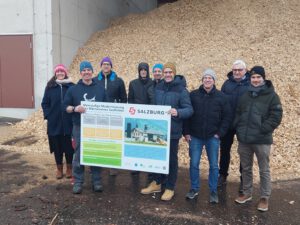
The BM Retrofit project team in Saalfelden with display board (© Green Energy Lab / Karin Dögl)
Testing innovative solutions in practice
BM-Retrofit’s innovative solutions are being tested at two Salzburg AG sites in Saalfelden am Steinernen Meer and Wald im Pinzgau, as well as at the equans heating plant in Kreuzstetten, Lower Austria. The heating centre in Saalfelden was recently visited and the latest innovation was scrutinised by the project team. A so-called CO lambda control system for the biomass boiler was installed here.
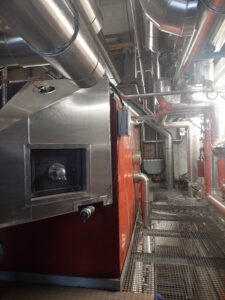
Operating optimisation of the boiler with CO lambda
control (© Green Energy Lab / Karin Dögl)
Specifically, an innovative combination of a probe installed in the boiler and intelligent software is now being used to continuously analyse how efficiency can be increased, how the biomass combustion quality can be improved and how even lower emission values can be achieved as a result. The best results are achieved when only as much air as necessary is fed in, but at the same time as little CO as possible is produced during the combustion process. Ongoing monitoring will now validate which new peak values can be achieved through this increase in efficiency.
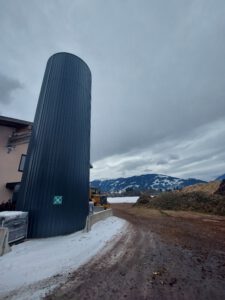
A heat accumulator increases flexibility in the grid
(© Green Energy Lab / Karin Dögl)
The project consortium was able to see the progress made with the demonstrator for themselves during a tour of the plant in Saalfelden. The opportunity was also used for the ceremonial handover of a display board, which provides information about the innovative project at the site.
Don’t miss a thing! >> Register here for our free newsletter!
The “BM Retrofit” project is funded by the Climate and Energy Fund as part of the “Vorzeigeregion Energie” programme and is being carried out in conjunction with the Green Energy Lab research initiative.
Contact
Ludwig Fliesser
Communications Manager
T: +43 676 471 93 47
E: ludwig.fliesser@greenenergylab.at
